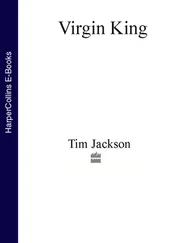Clifford Geertz - Local Knowledge (Text Only)
Здесь есть возможность читать онлайн «Clifford Geertz - Local Knowledge (Text Only)» — ознакомительный отрывок электронной книги совершенно бесплатно, а после прочтения отрывка купить полную версию. В некоторых случаях можно слушать аудио, скачать через торрент в формате fb2 и присутствует краткое содержание. Жанр: unrecognised, на английском языке. Описание произведения, (предисловие) а так же отзывы посетителей доступны на портале библиотеки ЛибКат.
- Название:Local Knowledge (Text Only)
- Автор:
- Жанр:
- Год:неизвестен
- ISBN:нет данных
- Рейтинг книги:4 / 5. Голосов: 1
-
Избранное:Добавить в избранное
- Отзывы:
-
Ваша оценка:
- 80
- 1
- 2
- 3
- 4
- 5
Local Knowledge (Text Only): краткое содержание, описание и аннотация
Предлагаем к чтению аннотацию, описание, краткое содержание или предисловие (зависит от того, что написал сам автор книги «Local Knowledge (Text Only)»). Если вы не нашли необходимую информацию о книге — напишите в комментариях, мы постараемся отыскать её.
Local Knowledge (Text Only) — читать онлайн ознакомительный отрывок
Ниже представлен текст книги, разбитый по страницам. Система сохранения места последней прочитанной страницы, позволяет с удобством читать онлайн бесплатно книгу «Local Knowledge (Text Only)», без необходимости каждый раз заново искать на чём Вы остановились. Поставьте закладку, и сможете в любой момент перейти на страницу, на которой закончили чтение.
Интервал:
Закладка:
The following essay, “Centers, Kings, and Charisma,” written for a volume honoring the theoretical sociologist Edward Shils, focuses on one such usefully tortured category—along with “alienation,” “ego,” “anomie,” and, of course, “culture,” among the most useful and the most tortured in all social science—namely, “charisma.” Originally charisma was a Christian theological term having to do with a God-given capacity to perform miracles; later it was adapted by Max Weber as a label for the I-Am-The-Man type of leadership grown all too familiar in our century. Most recently, however, an excessive currency has obscured its genealogy and taken the political edge off it almost altogether, transforming it into an up-market synonym for celebrity, popularity, glamour, or sex appeal. In “Centers” I attempt to restore both the genealogy and the edge by comparing royal progresses in more or less Protestant late-Tudor England, more or less Hindu late-Majapahit Java, and more or less Muslim late-Alawite Morocco.
The juxtaposition of Elizabeth’s tours through her realm as an allegorical representation of Chastity, Peace, or Safety at Sea, Hayam Wuruk’s parades through his as the incarnation of the Sun and the Moon Shining Over the Earth-Circle, and Mulay Hasan’s expeditions through his as the material expression of Divine Will seeks, like the similarly eccentric juxtapositions in the earlier essays, to attain what generality it can by orchestrating contrasts rather than isolating regularities or abstracting types. It is analogy that informs, or is supposed to, in this sort of anthropologizing, and it is upon the capacity of theoretical ideas to set up effective analogies that their value depends. And it is this kind of analogy between, here, the cult of a Virgin Queen, of a God King, and of a Commander of the Faithful, that the concept of charisma, training our attention on the witchery of power, enables us to construct.
All this is perhaps acceptable enough for traditional monarchies, where the symbolics of domination are so elaborate and egregious; whether extending the comparison to modern states, as I do in a rather hurried and anecdotal conclusion, strains the analogy beyond reasonable bounds is a more difficult question. One may doubt that high politics have been completely demystified in such states, even that they ever will be. But the general issue that is raised by considering the matter against so panoramic a comparative background—how far a mode of analysis designed to apply to the long ago or far away can be applied to ourselves—nevertheless remains. The De Voto Problem is all too real: what, save impressionism and self-parody, plus a certain amount of ideological axe grinding, might come from anthropological discussions of modern culture?
In the final two essays—or, more accurately, an essay and a three-part mini-treatise—I turn to this problem. “The Way We Think Now” was originally given as a bicentennial address to the American Academy of Arts and Sciences under the general theme “Unity and Diversity: The Life of the Mind,” as a sort of dialectical counterpoint to one given by the artificial intelligencer Herbert Simon. Taking the charge to heart this time, and thinking about what Simon would be likely to say, I distinguished between two reasonably different approaches to the study of human “thought” currently in vogue: a unific one, which conceives of it as a psychological process, person-bounded and law governed, and a pluralistic one, which conceives of it as a collective product, culturally coded and historically constructed—thought in the head, thought in the world. Rather than trying to adjudicate between them (in their radical forms—Chomsky and Whorf—neither seems especially plausible), I first traced the tension between them as it developed in anthropology—“primitive thought,” “conceptual relativism,” and all that—to become a driving, and often enough a distorting, force in ethnological theory. Then, turning again to notions of interpretation, translation, disarrayed genres, and analogic comparison, I sought to show that the enormous diversity of modern thought as we in fact find it around us in every form from poems to equations must be acknowledged if we are to understand anything at all about the Life of the Mind, and that this can be accomplished without prejudice to the idea that human thinking has its own constraints and its own constancies.
To do this, to produce a description of modern thought that can account for the fact that such assorted enterprises as herpetology, kinship theory, fiction writing, psychoanalysis, differential topology, fluid dynamics, iconol-ogy, and econometrics can form for us any category at all, it is necessary to see them as social activities in a social world. The various disciplines and quasi-disciplines that make up the arts and sciences are, for those caught up in them, far more than a set of technical tasks and vocational obligations; they are cultural frames in terms of which attitudes are formed and lives conducted. Physics and haruspicy, sculpture and scarification are alike at least in this: for their practitioners they support particular modes of engagement with life, and for the rest of us they illustrate them. Where they differ is that, though we know at least something by now about the sorts of engagements haruspicy and scarification tend to support, physics and sculpture, and all the other grand departments of the Life of the Mind, remain for the most part ethnographically opaque, mere recognized ways of doing recognizable things.
The remainder of the essay then consists of some reflections on the specters (“subjectivism,” “idealism,” “relativism,” and the like) that academics conjure up to scare us away from an ethnographic approach to their thought; on some methods already at work in anthropology by means of which such an approach, dismissing the specters for the concoctions they are, might be practically pursued; and on the usefulness, if it is pursued, of such an approach for the construction of a more realistic model of liberal education than the Athenian gentleman one that, however disguised at either Cambridge, still predominates. But it is only in the final three essays, devoted to a particular Life of the Mind subject, namely law, and to a particular issue within that subject, namely the relation between fact finding and rule applying in adjudicative processes, that the program—seeing thoughts as choses sociales —is empirically tried out.
These essays, collectively titled “Local Knowledge: Fact and Law in Comparative Perspective,” were given as the Storrs Lectures for 1981 at the Yale Law School, and they are the only essays of those assembled here that have not been previously published. Faced with trying to imagine something properly anthropological that would be of interest to lawyers, apprentice lawyers, law teachers, and perhaps even the odd judge, I thought to discuss a topic central to both Anglo-American jurisprudence and to common law adjudication, the is/ought, what-happened/was-it-lawful distinction, and to trace its half-parallels in three other legal traditions I had encountered in the course of my own researches: the Islamic, the Indic, and the Malayo-Indonesian. The notion was, first, to examine the issue as it appears in the contemporary United States; second, to describe the quite different forms it takes in these other traditions—so different as to demand a fairly thoroughgoing reformulation of it; and then, third, to say something about the implications of such differences for the evolution of orderly adjudication in a world where, no longer confined to their classical terrains, contrasting legal traditions are being forced into the most direct and practical sorts of confrontation.
Accordingly, the lectures describe, once again, a rather dialectical movement, tacking between looking at things in lawyers’ terms and looking at them in anthropologists’ terms; between modern Western prepossessions and classical Middle Eastern and Asian ones; between law as a structure of normative ideas and law as a set of decision procedures; between pervading sensibilities and instant cases; between legal traditions as autonomous systems and legal traditions as contending ideologies; between, finally, the small imaginings of local knowledge and the large ones of cosmopolitan intent. It all looks almost experimental: an effort to assay the fact-law formula by seeing what remains of it after it has been rung through the changes of headlong comparative analysis. That much does and much does not is hardly surprising; that is how all such experiments without metrics come out. But what does remain (an accommodation of a language of general coherence and a language of practical consequence) and what does not (a social-echo view of legal process) are of perhaps a bit more interest.
Читать дальшеИнтервал:
Закладка:
Похожие книги на «Local Knowledge (Text Only)»
Представляем Вашему вниманию похожие книги на «Local Knowledge (Text Only)» списком для выбора. Мы отобрали схожую по названию и смыслу литературу в надежде предоставить читателям больше вариантов отыскать новые, интересные, ещё непрочитанные произведения.
Обсуждение, отзывы о книге «Local Knowledge (Text Only)» и просто собственные мнения читателей. Оставьте ваши комментарии, напишите, что Вы думаете о произведении, его смысле или главных героях. Укажите что конкретно понравилось, а что нет, и почему Вы так считаете.
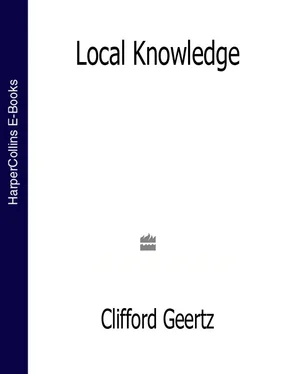

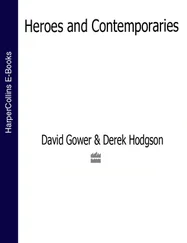

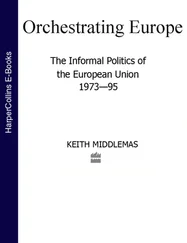


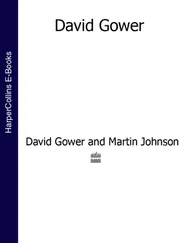


![Brian Thompson - A Monkey Among Crocodiles - The Life, Loves and Lawsuits of Mrs Georgina Weldon – a disastrous Victorian [Text only]](/books/704922/brian-thompson-a-monkey-among-crocodiles-the-life-thumb.webp)

